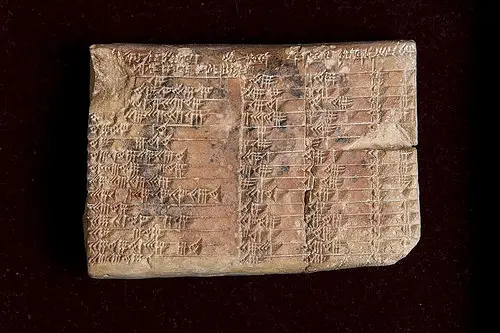|
Babylonian Trigonomeric Tablet Oldest Yet Known
August 26, 2017
New research has the potential to rewrite the history of trigonometry. Historians have long thought that the ancient Greek astronomer Hipparchus was the first to record evidence of trigonometry, the mathematics of triangles, about 120 B.C. The new study, conducted by researchers at the School of Mathematics and Statistics at Sydney's University of New South Wales, found that writing on the tablet is similar to the writing style of tablets dating to the 19th and 18th Centuries B.C. The researchers used the base 60 numerical system used by the ancient Babylonian mathematicians to demonstrate the ancient method for arriving at the numbers on the table. The Babylonian tablet is known as Plimpton 322, after its own, American philanthropist George Arthur Plimpton, who bought the tablet from Banks in 1922. The August 24 issue of History Mathematica has more details. |
Social Studies for Kids |
Social Studies for Kids
copyright 2002–2019
David White



 A clay tablet dating 3,700 years ago, to ancient Babylonia, has a trigonometric table, researchers now say, after completing new studies into the tablet. The tablet is 5 inches long and 3.5 inches wide and features 15 rows of characters chiseled in four columns. The tablet was discovered in the early 1900s in what is now southern Iraq by noted archaeologist and antiquities dealer Edgar Banks (who many say was the inspiration for famed fictional archaeologist/adventurer Indiana Jones).
A clay tablet dating 3,700 years ago, to ancient Babylonia, has a trigonometric table, researchers now say, after completing new studies into the tablet. The tablet is 5 inches long and 3.5 inches wide and features 15 rows of characters chiseled in four columns. The tablet was discovered in the early 1900s in what is now southern Iraq by noted archaeologist and antiquities dealer Edgar Banks (who many say was the inspiration for famed fictional archaeologist/adventurer Indiana Jones).
